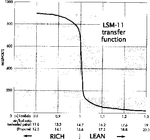dope40
Member level 4

- Joined
- Oct 3, 2011
- Messages
- 76
- Helped
- 0
- Reputation
- 0
- Reaction score
- 0
- Trophy points
- 1,286
- Location
- Bulgaria
- Activity points
- 1,777
Hi, i am planing to build o2 meter for my car using PIC 16FXXX and i don't know how to make it when it reads the voltage in one of the pins (for example RA2) it converts it into the appropriate lambda value.
**broken link removed**
Here is how it is suppose to convert the analog value , but i am new to the PIC world and i dont know how to make it ... Please help :-(
**broken link removed**
Here is how it is suppose to convert the analog value , but i am new to the PIC world and i dont know how to make it ... Please help :-(


